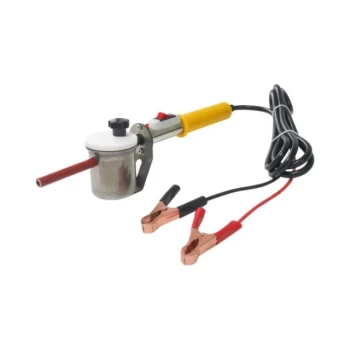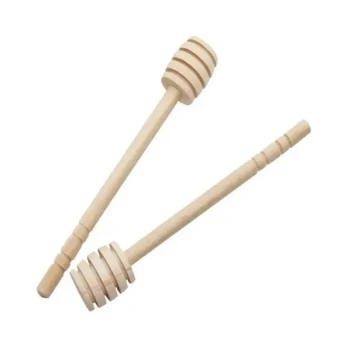The critical number every beekeeper must know is the action threshold for Varroa mite infestation. The commonly suggested and scientifically supported threshold is a 3% infestation rate. When a colony's mite level reaches or exceeds this percentage, immediate treatment is required to prevent significant damage, disease spread, and potential colony collapse.
The 3% threshold is not merely a guideline; it is a critical decision point for hive survival. Understanding how to accurately measure this rate and why acting upon it is necessary forms the bedrock of modern, responsible beekeeping.
Why a 3% Threshold Matters
A hive can appear strong and healthy to the naked eye while harboring a growing mite problem. The 3% threshold is based on the exponential growth curve of mites and their role in vectoring deadly viruses.
The Exponential Growth of Varroa
Varroa mite populations build slowly in the spring but grow exponentially during the summer brood-rearing season. A seemingly low rate of 1% can double to 2%, then 4%, and then 8% in just a few brood cycles. Acting at 3% allows you to intervene before the population becomes uncontrollable.
Mites as Disease Vectors
Varroa mites are devastating because they transmit viruses, most notably Deformed Wing Virus (DWV). As mite levels increase, so does the virus load within the colony. The 3% threshold represents a point where viral transmission can overwhelm the bees' immune systems, leading to sick and weakened bees that cannot sustain the colony.
The Impact on Colony Health
Once infestation surpasses 3%, the consequences become severe. Bees suffer from shortened lifespans, and the colony's ability to forage and produce healthy brood declines. This is especially critical in late summer and fall, as high mite loads prevent the colony from raising the healthy "winter bees" needed to survive the cold months.
How to Accurately Measure Infestation
Relying on visual inspection is not an option for managing Varroa. You must actively sample your hives to get a reliable number.
The Alcohol Wash: Your Most Reliable Tool
The alcohol wash is considered the most accurate, reliable, and economical method for assessing Varroa infestation. It involves collecting a sample of approximately 300 bees (a half-cup) and using isopropyl alcohol to dislodge the mites for an easy count. While it does sacrifice the sampled bees, it provides the most precise data for making critical treatment decisions.
Calculating Your Mite Rate
The calculation is straightforward. After performing your wash, count the dislodged mites and the total number of bees in your sample.
The formula is: (Number of Mites / Number of Bees) x 100 = Infestation %
For example, if you find 9 mites in a 300-bee sample, your calculation would be (9 / 300) x 100, which equals a 3% infestation rate. This signals it is time to take action.
Common Pitfalls to Avoid
Inaction or improper monitoring can have catastrophic consequences that extend beyond a single hive.
The False Sense of Security
A common mistake is assuming a hive is healthy because it has a large population and seems to be bringing in nectar. Varroa damage is often hidden until the mite population has already exploded and virus levels are critical. Waiting to see visible signs like bees with deformed wings is waiting too long.
The Risk of Colony Collapse
Ignoring mite counts that are at or above the 3% threshold is the single largest contributor to overwintering losses. A colony entering winter with a high mite load is severely, and often fatally, compromised.
The Danger to Other Hives
A heavily infested colony can collapse and be robbed out by bees from neighboring hives. This process spreads mites and viruses throughout your apiary and to other beekeepers' hives in the area, creating a "mite bomb." Responsible mite management is a community-level concern.
Making the Right Decision for Your Hive
Use your mite count data to guide your management strategy. Your goal is to keep mite levels low before they can cause irreversible harm to the colony.
- If your mite count is below 3%: Continue with your regular monitoring schedule (e.g., monthly). Mite populations can change rapidly, so consistent vigilance is key.
- If your mite count is at or above 3%: You must treat the colony immediately. Select a treatment method that is appropriate for the time of year, temperature, and whether you have honey supers on the hive.
- If you are preparing for winter: Be even more conservative. Many experts recommend a lower action threshold of 1% to 2% on the last generations of bees that must survive the winter.
Consistent monitoring is the foundation of proactive beekeeping and the key to ensuring your colonies thrive.
Summary Table:
| Key Metric | Details |
|---|---|
| Action Threshold | 3% infestation rate |
| Primary Risk | Exponential mite growth & virus transmission (e.g., Deformed Wing Virus) |
| Recommended Monitoring Method | Alcohol wash (sample of ~300 bees) |
| Critical Timing | Late summer/fall; aim for 1-2% threshold before winter |
Protect Your Apiary with Professional-Grade Equipment
Accurate mite monitoring is the first step; having the right tools is the next. HONESTBEE supplies durable, reliable beekeeping supplies and equipment to commercial apiaries and distributors through our wholesale-focused operations.
We understand the stakes of managing Varroa mites. Let us equip you with the quality supplies you need to keep your colonies healthy and productive.
Contact HONESTBEE today to discuss your wholesale equipment needs and ensure your operation's success.
Related Products
- Varroa Easy Check Mite Tester Kit Counter Alcohol Wash Jar
- High Performance Plastic Queen Excluder for Beekeeping and Apiary Management
- Professional Plastic Queen Excluder for Modern Beekeeping
- Metal Queen Bee Excluder for Beekeeping
- Premium Wood Framed Metal Wire Queen Bee Excluder
People Also Ask
- How often should varroa mite checks be performed using the alcohol wash method? Optimize Your Apiary's Health
- Why is an alcohol wash preferred over powdered sugar rolls? For Accurate Varroa Mite Management
- What are the key features of the Varroa EasyCheck design? Streamline Your Mite Monitoring for Accuracy
- How does the Varroa EasyCheck determine mite counts? Achieve Accurate Hive Health Monitoring
- What is the most accurate method for monitoring varroa mites? The Definitive Guide for Beekeepers



















